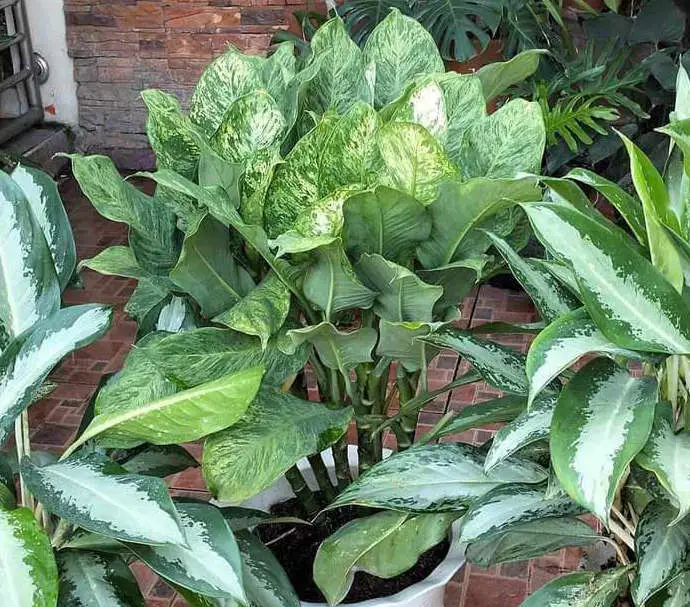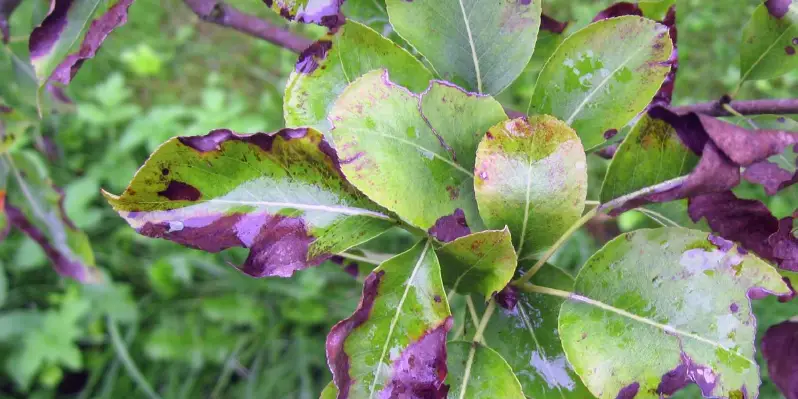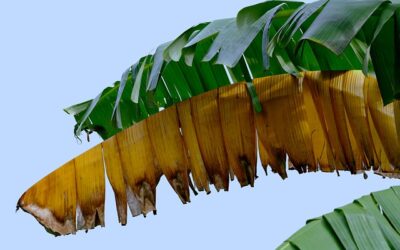Variegated rubber trees are one of the most popular indoor plants for their attractive leaves and easy care. But, many people have trouble caring for them properly because they don’t know what to do. This article is a complete guide on how to take care of variegated rubber trees so you can keep them healthy and happy!
Variegated Rubber Tree Care: A Complete Guide
The best way to care for a variegated rubber tree is to follow the same care rules as a standard rubber tree but provide slightly more light, as the variegated variety needs more light to thrive. The variegated rubber tree care guide below is a great place to start:
Watering – Water your plant every week by spraying the leaves and pouring water into the saucer underneath until it drips out of the drainage holes in the bottom.
Light – Variegated rubber trees need bright, indirect sunlight, so place them in front of a sunny window. You may also want to use LED grow lights (Amazon link), which are perfect for variegated indoor plants.
Temperature – Keep your plant at 65-75 F (18-24 C). If the temperature drops below 50 degrees, you should bring it indoors to a warm environment where temperatures stay between 60 and 80 F (15 to 27 C) during winter.
Fertilizing – Fertilize your variegated rubber tree every month in the growing season with standard liquid houseplant fertilizer, following the dosage instructions on the label.
Pruning – Prune off any dead or dying leaves and branches as soon as you notice them keep your plant healthy. These leaves should be removed with a pair of pruning shears.
Potting – Repot your plant every year in spring to refresh the soil and make sure it has good drainage, but only go up one pot size for smaller plants (use a 12″ or 14″ pot for medium plants).
Pests – Variegated rubber trees are susceptible to mites, mealybugs, and scale. Check your plant regularly for these pests and remove any immediately to keep them from spreading.
Does a Variegated Rubber Tree Need More Light?
Yes, variegated rubber trees need more light than their darker-leaved relatives. This is because the variegated leaves do not absorb as much light, and they allow more through the leaf.
As such, I recommend placing variegated rubber trees near windows, but out of direct sunlight. Make sure there are no objects or plants blocking the plant from receiving the light it needs to survive. Lack of sunlight can result in the rubber plant looking leggy.
You could also use artificial grow lights! These work great for indoor plants, and they have become a lot more affordable lately. Just make sure you place the lights at an appropriate distance from the plant. I recommend leaving a gap of roughly one foot between the light and the first leaf.
Why Are Variegated Rubber Trees So Expensive?
Variegated rubber trees are more expensive than their dark-leaved relatives for a couple of reasons.
First, they require more care than most other plants. They need more water, they require slightly brighter light than their dark-leaved counterparts, and you should also avoid drafts that could harm the leaves or branches.
Second, variegated rubber trees are not as common in nurseries because it takes longer to grow them from cuttings compared to regular rubber trees. There is also a higher chance that the variegated rubber tree isn’t good enough to sell, which means prices need to be higher to cover losses.
How Do I Make My Rubber Tree More Variegated?
Regularly prune your rubber tree to make it more variegated. You can do this by removing the larger, darker leaves on a regular basis and leaving behind only the lighter-colored leaves that are smaller in size.
How Do You Maintain Variegation on a Variegated Rubber Tree?
Variegation is always present on variegated rubber trees, but the leaves can change color if you give the wrong care. This happens if you overwater your tree, place it in too much shade (or not enough light), cause damage to its leaves/branches, and occasionally when new growth appears after pruning.
As such, you should always make sure to water your plant when the soil is slightly dry and avoid overwatering it. Also, you need to place variegated rubber trees in areas that receive bright or filtered sunlight (and remember not to leave them in direct sunlight).
You also shouldn’t move a variegated rubber tree very often because this can cause damage to the leaves. If you need to move it, make sure you do so very carefully and slowly.
Where Do Variegated Rubber Trees Come From?
The variegated variety of the Ficus elastica is native to South Asia and Southeast Asia. It is a member of the Moraceae plant family, which is the same family as figs and mulberries.
Conclusion
In conclusion, variegated rubber trees are one of the most popular indoor plants for their attractive leaves and easy care. But, many people have trouble caring for them properly because they don’t know what to do.
This article is a complete guide on how to take care of variegated rubber trees so you can keep them healthy and happy. I hope this article has been helpful. If you have any questions, please feel free to leave a comment. Thank you for reading!
Tim is an avid gardener from the UK. He was the founder of PlantCarer.com from 2021 to Sep 2023. He sold PlantCarer.com to Aaron. He has since started his own business called Seed To Supper, which provides new gardeners all the materials you need in a box (pots, seeds, compost and instructions) to grow your own delicious and nutritious vegetables and herbs from start to finish – no garden required.








0 Comments